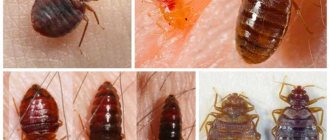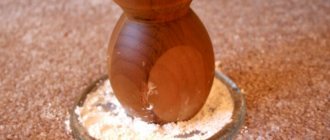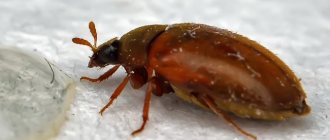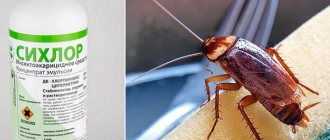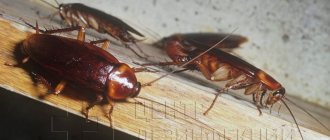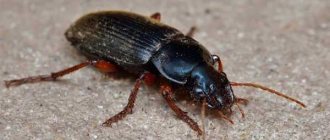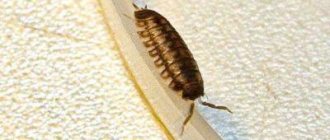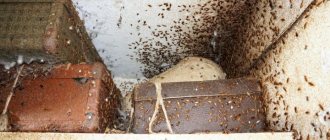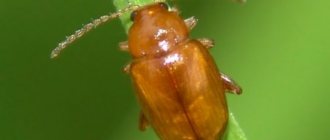- By Vil Malinoshevsky
- Destruction of bedbugs
Dormitories are the most actively infested building types. This is obvious: it is in the dormitory that bedbugs find the largest number of victims to feed on and can very easily and quickly migrate between adjacent rooms, leaving places where they are threatened (for example, the same insecticides).
Here, for example, is a video from one of our treatments in a Moscow hostel:
On the other hand, it is in the dormitories that these parasites are most difficult to poison. This is due to the fact that bedbugs in a dorm most often infect many (if not all) adjacent rooms, but they begin to seriously fight them only in one, while all the neighbors remain silent, and in response to proposals to do something, They just brush it off and refer to the fact that, they say, they don’t get bitten, and in general, they don’t have the money to exterminate bedbugs.
As a result, even if it is possible to get rid of bedbugs in one room, the result is usually temporary - the parasites disappear only for a few weeks, until new ones make their way from neighboring rooms.
In addition, in dormitories, bedbugs accumulate in rooms in huge quantities due to the fact that, as a rule, repairs are rarely made here, and many shelters are available to them. Plus, there are usually many people living in each room and bedbugs have an almost unlimited source of food. Not surprisingly, they are especially dangerous here: they literally bite people sensitive to their bites, leaving a lot of itchy red bumps after each night.
>
For this reason, getting rid of bedbugs in a dorm room is much more difficult than doing the same in an ordinary apartment, and even more difficult than eliminating them forever in a separate private house. It is even more difficult to do this on your own without knowing the biology of bedbugs and the nuances of professional pest control.
However, anything is possible. At DesinCity, we poison bedbugs in our dorms several times every week. As of the beginning of 2019, our exterminators were poisoning bedbugs in all student dormitories in Moscow, in some we worked several times, and also several times a month we were called to treat ordinary dorms, where families with children live in each room and where it is necessary to select methods of control that guarantee the safety of all household members.
We know for sure that bedbugs live both in very old and unkempt family dorms, and in student dormitories at Moscow State University, Moscow State Technical University, Tomsk State University and other prestigious universities. Moreover, the situation with them here is not much better than in the old hostels, long occupied by married couples.
In all such cases, our exterminators completely remove bedbugs. In four cases out of five, this happens the first time; in one case out of five, to completely exterminate the parasites, the treatment is repeated a second time after 10-12 days, when all the larvae hatch from the eggs. The video shows an example of such disinfestation in a family dorm:
>
Of course, such treatment is much more effective than baiting bedbugs on your own and using conventional means, especially folk ones. However, if you follow its basic principles when fighting bedbugs yourself, you can remove them without calling exterminators. True, this will require much more time, and sometimes more money. But nevertheless, you can save yourself from bedbugs.
So what exactly do we do to ensure that bed bugs are gone after the first treatment?
Why do bedbugs appear in dormitories?
Dormitories differ from apartment buildings in that people usually live in them temporarily. These are most often students, workers coming to the site from other regions, as well as company employees sent to another city on a business trip. People coming from different places can transport pests along with their personal belongings.
Residents do not own the premises, they simply use it. When a person does not consider his place of residence to be his own, he often treats it carelessly and does not maintain the necessary level of hygiene in it.
Living conditions in these buildings are worse than in ordinary houses. There are different types of dormitories. In block common areas are provided for several rooms. In the hallways, all residents use the same showers, toilets, and kitchen. It is difficult to maintain cleanliness and wash clothes frequently in such conditions, even with a strong desire.
The rooms in the dormitories are small, and several people live in them at the same time. There is little free space in them, rubble and piles of things form. These are excellent, comfortable conditions for insects that can hide anywhere.
What to do after treatment
Exterminating bedbugs is not the most pleasant thing. After spraying the poison, you need to give it time to act - sometimes up to 3 days, although when destroyed by fog, a shorter period is needed. After this, you need to collect the dead insects using a brush or vacuum cleaner, which then need to be washed thoroughly. All accessible surfaces must be thoroughly washed with soap or soda solution. To be sure, it is better to wash all the dishes that were in the room, even in cabinets and sealed bags.
When baiting bedbugs yourself, the treatment is repeated after two weeks. If destroyed professionally, a second treatment will not be required.
Why is it especially difficult to get rid of bedbugs in a hostel?
The rooms are located close to one another, there are no barriers between them that bedbugs could not cross in search of food. They migrate between living spaces and between floors. If you poison bed bugs in one room, they will temporarily go to the next room and then return back.
The fight against bedbugs must be carried out simultaneously for the entire building. It is possible to treat absolutely all rooms only when there is no one in them. In student dormitories this is possible during vacations, in workers' dormitories - during shift changes, between arrivals of different shifts. Unfortunately, quite often the situation develops in such a way that it is impossible to arrange a single processing.
But this does not mean that you need to resign yourself to living with bedbugs. If you do not get rid of insects at the initial stage, after a few months they will be in all rooms.
Physical way
This is a temperature effect - bedbugs are afraid of frost and extreme heat. If possible, all windows in the building are opened and the rooms are “frozen” so that the temperature in them drops to -20 degrees. Within a few hours of freezing, both adult bedbugs and eggs die.
The second option is to treat absolutely all rooms and things in them with steam. At temperatures above 40 degrees, adult insects and larvae die, above 60 degrees – eggs.
Both methods are really effective for controlling bedbugs and are safe for people, but they are very difficult to implement in dormitories.
Why are bedbugs dangerous?
These are blood-sucking parasites that feed on human blood. Bedbugs do not touch food supplies or damage furniture or structures. But their proximity to humans makes life unbearable. Bedbug bites are unpleasant and always itch very much. They often cause a severe allergic reaction. A person scratches the bite sites, and infection gets into these scratches and wounds. When bugs pierce the skin, they inject saliva into the wound, which may contain pathogens of infectious or viral diseases. Since bedbugs in dormitories can bite not just one victim, but several, they transfer sources of disease from one person to another.
In addition to the possibility of infection, bites are dangerous because a person constantly experiences discomfort, he cannot sleep normally, is nervous, feels overwhelmed, tired, and suffers from insomnia.
Mechanical destruction of parasites
If a few bedbugs appear in the apartment walls, then it is quite possible to get rid of them yourself, rather than calling specialists from the SES. This can be done mechanically (physically) - to remove the parasites out.
How else can you fight bed bugs on your own? When physically affecting one or more parasites, the residents make a lot of noise - they wake up these insects. Then, people knock on furniture, move various objects, etc.
Then, these small pests run out on their own from their previous habitats. Next, the tenant tramples these small pests underfoot or sucks them up with a vacuum cleaner so that they disappear without a trace.
Ways to control bed bugs in a dorm
Just like in an apartment, there are two ways to get rid of bedbugs in a dormitory: physical and chemical. Physical means a change in temperature. Chemical - the use of special drugs that kill insects.
Traditional methods
Not a single folk remedy helps in the fight against bedbugs. The fact is that bedbugs feed only on human blood. They cannot be poisoned by baits with poison - they simply do not eat them. Using improvised means can only temporarily repel insects. For example, turpentine and vinegar have a strong odor that bedbugs do not like. If you treat furniture, floors, and walls with them, then probably some of the adult insects will go to the neighbors. And when the smell disappears, the bedbugs will come back. In this case, the bedbug eggs will remain unharmed. In addition, treating the premises with strong-smelling substances is unlikely to please the residents themselves or their neighbors. Or, most likely, it is prohibited by the rules of residence.
In addition to these liquids, essential oils with pungent odors, as well as plants such as wormwood, valerian, and tansy, repel insects. But again: they only scare away for a while. Over time, bedbugs get used to new circumstances and can ignore unpleasant odors in search of a food source.
Mechanical destruction of bedbugs
To combat parasites, you can and should find a nest of bedbugs. Most likely, this is where the largest number of insects hide during daylight hours. Their eggs are also located there. If a nest is discovered, it is necessary to destroy the bedbugs and their eggs mechanically. That is, scrape off all the dirt, excrement, remnants of scales and egg shells, and crush insects. Vinegar and turpentine will help in destruction - they corrode the chitinous shell, so you can pour these substances into the place where insects and their eggs accumulate. Attention: you need to work with gloves, very carefully and accurately. All contents of the nest must be placed in a sealed bag and taken out of the room, out of the building.
Where to look for nests:
- on the bottom and sides of the mattress, on the base and headboards of the bed, inside mattresses, on the seams;
- in bedding, accessories, pillows, bedspreads and other textiles near the sleeping place: bedbugs can hide under the bedside rug and behind the wall tapestry;
- on the back walls of bedside tables, cabinets and other cabinet furniture;
- in lamps, household appliances;
- behind baseboards, in ventilation, in sockets and switches;
- behind peeling wallpaper, linoleum, in cracks in the floor and walls. It is best to conduct the search during daylight hours, with maximum lighting.
There may be several nests. Females can lay their eggs anywhere, including on vertical or inclined surfaces. Therefore, when treating a room, the main thing is to inspect all the secluded darkened places where parasites can be found.
Thermal destruction
This is exposure to very low or elevated temperatures. A traditional method of fighting bedbugs, which has been used for several centuries. Freezing means lowering the room temperature to -20 degrees. To do this, you need to turn off the heating in cold weather and open all windows and doors. This is very difficult to implement in an urban environment, in an ordinary multi-storey building connected to centralized communications. But it is really very effective against insects in a private home - the bedbugs die in a few hours.
The second option is steam treatment. To kill house bugs, you need to direct a stream of hot air at them. They die at temperatures above 40 degrees, eggs - at temperatures above 60 degrees. You can use ordinary household steam generators. But the impact must be direct, aimed directly at bedbugs and eggs within a few minutes. If you leave untreated objects or surfaces where bedbugs may be located, all treatment will be useless, since the surviving individuals will quickly restore the population.
Treatment with chemicals
The chemical method of killing insects is the most reliable. Disinsection preparations have been developed that kill pests by contact or by inhaling toxic substances. It is important to use products with a reliable ovicidal effect, that is, those that can kill not only an adult bedbug, but also eggs.
Effective against bedbugs are drugs based on active ingredients: cypermethrin, permethrin, imidacloprid, tetramethrin. They come in different forms, but the most convenient are ready-to-use sprays. For example, the company MediLIS Laboratory produces Antiklop and Supersila sprays against bedbugs. They are simply sprayed where bedbugs and their eggs may be located. After 15 minutes, the room is ventilated, and the working surfaces are thoroughly washed with a soda-soap solution. The poisonous effect lasts for 3 weeks (Superpower against bedbugs) or up to 60 days (Antiklop). The products are lethal to insects, but safe for humans if the manufacturer's instructions are followed and the processing is carried out carefully.
How to recognize a bedbug nest
Nests are places of accumulation and main activity of parasites, which have obvious characteristic signs:
- accumulation of black dots (excrement) in one area;
- presence of eggs;
- dry skins of larvae;
- a cluster of insects of different ages and sizes.
To create nests, bedbugs find secluded places where it would be comfortable for them to develop and reproduce. The more cluttered the room, the greater the likelihood of bedbugs appearing there. The most common places where parasites accumulate can be:
- under the joints of wallpaper that has peeled off;
- the top of the curtains;
- for paintings and wall hangings;
- books and bookshelves;
- pet or bird cages;
- cracks in parquet or under baseboards;
- under and inside furniture;
- in sockets and switches;
- under the windowsill;
- in window frames;
- electrical appliances;
- near the batteries.
How to Make Dorm Processing More Efficient
Modern insecticides are really effective in controlling bedbugs. As a rule, one treatment is enough to destroy all insects in the room. Re-processing is not required under normal conditions. But it must be taken into account that it is much more difficult to get rid of bedbugs in a dormitory than in an apartment; it is necessary to treat the entire dormitory building. It is necessary to re-treat with a drug containing other active ingredients. You can use not only products designed to combat bedbugs specifically. Broad-spectrum insecticides are also suitable. For example, in the line of products from the Medilis company these are Cyper, Permifen, Super, Neo.
It is advisable to carry out disinfestation simultaneously in all rooms of the dormitory to prevent the migration of parasites. You can at least agree with those living in the block, in the neighboring rooms, so that the area where disinfestation is carried out is maximum.
How to prepare a room
In order for the toxic substances to better reach their target, before treating the room you need to do the following:
- clean up, remove garbage and debris from things - bedbugs can hide in them;
- wipe off dust, wash accessible surfaces - dirt and dust prevent the spread of toxic substances;
- move furniture away from the walls, turn mattresses over to treat their entire surface, especially seams and joints;
- remove all food and dishes from the room, and if this is not possible, put them in sealed bags and cabinets;
- Wash bed linen and accessories in hot water, iron if possible, or dry clean;
- Before spraying, remove small personal items so that you do not have to wash them later.
It is advisable that there are no people in the room other than the person conducting the treatment. You must use the products in strict accordance with the instructions, follow the rules of application, concentration, and distance from the surface to be treated. You need to work with gloves and respiratory protection.
What to do after using insecticides
After treatment, when the time necessary for exposure has passed, you need to thoroughly ventilate the room, wash the surfaces with which residents are in direct contact with a soap-soda solution. Then, when the bedbugs begin to die en masse, you need to collect their remains with a brush or vacuum cleaner, as well as other dirt left behind: excrement, eggs and their empty shells, scales, remains of shells. All this needs to be thrown away immediately.
Usually one treatment is enough. But to be sure, after two weeks you should make sure that no new insects have appeared. They can hatch from eggs if you missed them during processing or did not notice them.
Folk remedies
Any folk remedies and methods only repel pests, but do not kill them. Turpentine and vinegar have an unpleasant odor, so bedbugs can leave the room if all surfaces in it - floors, walls, window sills, doors, bed legs and back walls of furniture - are treated with these substances. But it is unlikely that this method will be liked by the residents themselves and their neighbors. If you pour vinegar or turpentine directly into a bedbug nest, the caustic substances will destroy the chitinous shell of the insects, which will lead to their death. They also eat away at the shell of the eggs. But they only work with direct contact. That is, there is no guarantee that you will be able to treat all insects and all eggs in the room with these substances. And if after such treatment there are still bugs, they will quickly restore the population.
To repel insects from the room, you can use fresh or dried plants: tansy, wormwood, valerian. Essential oils with strong scents can also repel parasites, but insects may become accustomed to them and ignore them.
Prevention
Even professional exterminators do not guarantee the removal of bedbugs in hostels. This is the most difficult object to combat insects. They will appear there again and again even with constant cleaning. The main thing in such a situation is to prevent an excessive increase in the number of insects. If one of the residents complains of characteristic bites, you need to immediately look for a nest with bedbugs and begin the fight. To make it easier to find the place of accumulation, you need to maintain order in the room, avoid clutter and dumping of things, carry out repairs in a timely manner: glue wallpaper, seal cracks in the floors and walls. If bedbugs are detected, do not repel them with folk remedies, but use effective chemicals and insecticides that will help cope with even resistant bedbugs in the hostel.
Professional processing
When spraying toxic substances yourself, there is a risk of missing places where bedbugs may be hiding. The chemicals must reach the insects and their eggs. The bug does not eat bait, it feeds only on blood, so it will not be possible to kill domestic bedbugs with food. The parasite must inhale the poison or touch it. Because of this focus, you will have to carry out the treatment of the room yourself several times. Residents of neighboring rooms will have to do the same so that bedbugs do not run back and forth from the poison.
More effective and faster destruction of bedbugs using the hot or cold fog method. This is the spraying of a toxic substance in the form of a finely dispersed mixture using special equipment. The fog does not immediately fall on objects, but stays in the air for some time, penetrating into all the cracks, holes, and secluded places where bedbugs or their eggs may be.
The sanitary service "ProfSES" provides services for removing bedbugs in dormitories. Our specialists will select effective chemicals for this and treat the premises quickly and accurately. Considering the specifics of the object, it is better to simultaneously treat several adjacent rooms.
Specialists will treat the premises and tell you what to do after disinfestation. No occupants should be in the room when chemicals are sprayed. And exterminators follow safety precautions and do their work in such a way as to prevent poisoning of others.
Products, tools and chemicals to be used.
So what are house bugs afraid of and how to get them out?
Chemical agents are the best treatments for bedbugs, as they are compact and have the greatest effect on bedbugs at different stages of their development.
"Get"
The best drugs for bedbugs among the population are:
- “Get” is a super remedy for bedbugs, as this chemical is diluted in ratio. Places where parasites are concentrated are treated with this substance. The effect of the drug lasts up to 1 year. It also does not have a specific odor and will not harm either animals or people.
- “Executioner” is a liquid that should be diluted in water and sprayed on the surface of the largest concentration of bedbugs. It can also be used to process personal items. This drug is one of the safest for people.
- "Raid" is an aerosol against creeping insects, in particular bedbugs. You should spray the product on the area with bedbugs. This product has a specific pungent odor, and its duration of action does not exceed 15 days; quick results can be obtained by independent actions.
- "Riapan" is a powder mixture that is sprinkled into places where bedbugs accumulate; it is not an expensive medicine. The maximum validity period of the product is 10 days. It is not recommended to use if there are pets and small children in the room, as the product can cause migraines and other unpleasant symptoms, and helps remove bedbugs as soon as possible.
- "Karbafos" is a concentrated liquid, ready for use for the extermination of small parasites. After applying this drug, you should wet clean the room, as chemical vapors can cause headaches and will help destroy pests.
Temperature effect
It is known that bedbugs die when exposed to heat or extreme cold. Therefore, SES specialists carry out a special thermal spray treatment of the entire room.
Controlling bedbugs or other bugs at specific temperatures is safe and does not involve the use of toxic chemicals.
Also, when exterminating insects from all rooms, residents can destroy not only parasites, but also their eggs.
Destruction of small pests in the cold
Bedbugs die quickly from severe frosts, because they cannot tolerate temperatures of -20 degrees Celsius or lower.
When destroying various representatives of hemiptera in winter, residents open all the windows and let the frosty air inside. At this time they go outside and then walk there for several hours.
Thus, under the influence of frost, all small pests quickly die.
Removing insects with high temperature
In addition to low temperatures, bedbugs die quickly due to high temperatures - over +45 degrees Celsius. However, the eggs of these insects are more stable: they live at +50 degrees Celsius for more than a day.
More often, during residential heat treatment, specialists use steam generators, which they use to cover surfaces infested with small pests.
However, the destruction of hemipteran representatives in this way is a long and difficult process.
Repellent odors for cockroaches
The odors that these ancient parasites cannot stand are chemical and natural. The use of the former is very difficult due to the fact that these substances are unpleasant to the human sense of smell. The conversation about them will come second. But the use of various natural aromas can perform both useful and pleasant functions. For example, you can put a sprig of red or black elderberry in a vase and place it on the kitchen table. The same goes for tansy and chamomile (pyrethrum) flowers. Such a decorative detail will help scare away unwanted guests, because the aroma of these plants is very unpleasant for cockroaches.
Another great way to combine functions is to use an aroma lamp. Many essential oils are repellent to cockroaches. It is recommended to use in aroma lamps or spray indoors with a spray bottle a solution of oils from the following plants:
- eucalyptus;
- sagebrush;
- mint;
- anise;
- honeysuckle;
- tea tree;
- cedar;
- lavender.
All these plants have a specific, but pleasant aroma for humans. Of course, if you are allergic to any of the listed plants, you do not need to use its extract. In other cases, this is a safe and comfortable way to scare away six-legged pests from your home.
The smell of bay leaves is also a repellent for cockroaches. Dried leaves can be tucked behind baseboards, placed under the refrigerator and left near the vents.
The question often arises: are cockroaches afraid of the smell of vinegar? Vinegar helps, rather due to the fact that the insect cannot tolerate an acidic environment.
If we talk about chemical odors that cockroaches do not like, these include ammonia, turpentine, and kerosene. All these substances are not absolutely safe for people, which makes their use as repellents almost impossible. Although some desperate housewives add ammonia solution to water to wash kitchen floors. Situations happen and the beginning of renovations in the apartment can contribute to the departure of cockroaches, due to their intolerance to the smell of oil paint.
Allergies and depression
Everyone knows that bedbug bites often cause allergic reactions on the skin (redness, itching) - few know that insects can also stimulate depressive conditions.
Pavel Alexandrov: “Nowadays, bed bugs practically do not carry infectious diseases. Previously, during wars, the transmission of typhus could not be ruled out, but recently nothing has been heard about this.
However, bedbugs are a common cause of allergic diseases. Itchy rashes on the body that appear after bedbug bites can last a long time.
Theoretically, a bug can transmit hepatitis B if it sucks the blood of a sick person, then crawls onto a healthy person, bites him, and then the person crushes the bug. But you see for yourself, the algorithm is complex, there are no confirmed cases in science.
Although the body of bedbugs can contain pathogens of a number of diseases, it is still considered probable that they only transmit the hepatitis B virus
A bedbug can definitely be one of the reasons for a bad mood in young children: bedbug bites are quite painful, children are sensitive to it - they begin to have an allergic reaction, constant itching prevents them from sleeping, children become irritable and whiny. As for adults, constant itching and, as a result, poor sleep can cause depression.
In addition, bedbugs can be mechanical carriers of intestinal infections, but this is the case if a person sleeps and eats in the same place. They crawl over food, collect dirt behind baseboards - and carry it all on their paws. But this happens rarely, since most often bedbugs live under mattresses, behind pictures, under the carpet, and not next to food.”
Dmitry Gapon: “A certain harm from bed bugs is the disruption of a person’s normal sleep; their bites can cause redness of the skin, the formation of a rash, itching, an allergic reaction, and in rare cases, anaphylactic shock. There is no reliable information about the transmission of pathogens of infectious and invasive diseases by bed bugs. Although the causative agents of a number of such diseases can be in the body of bedbugs, it is still considered only probable that they transmit the hepatitis B virus.”
